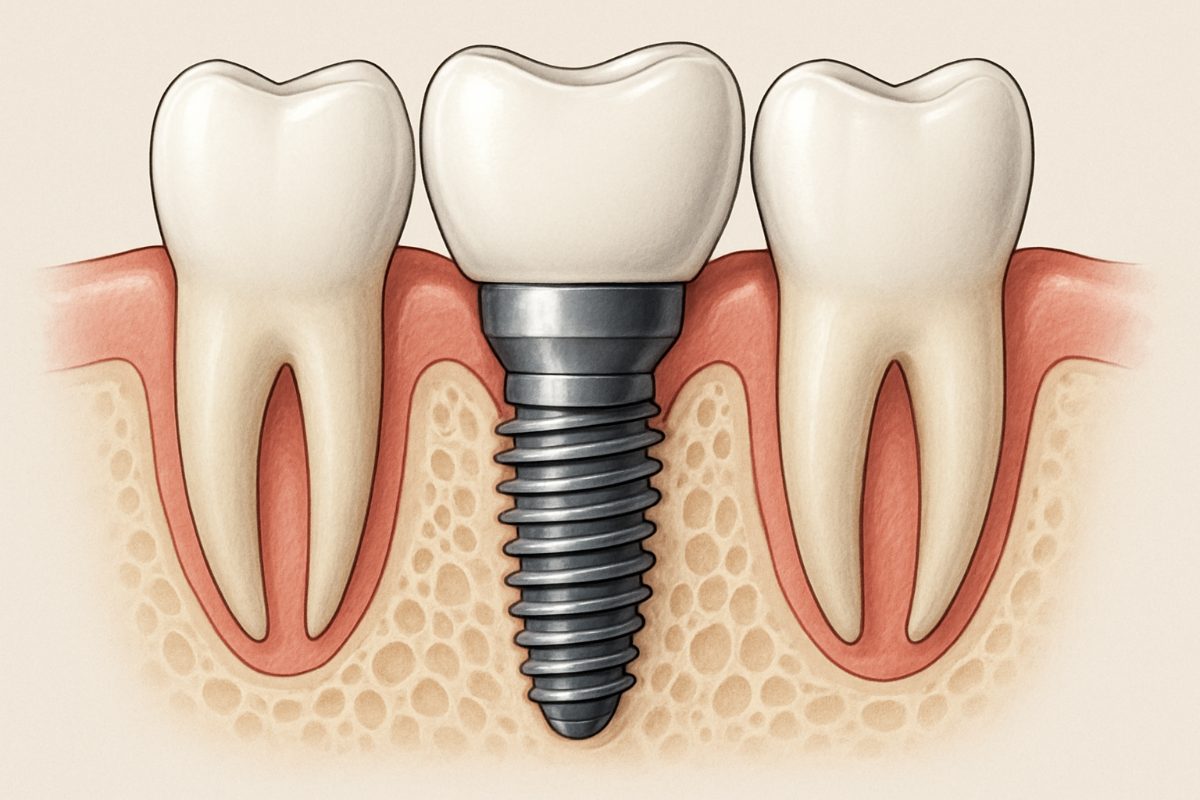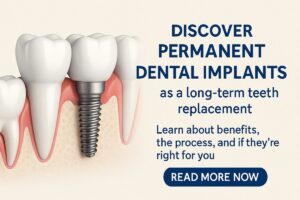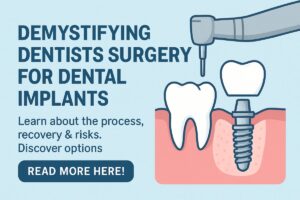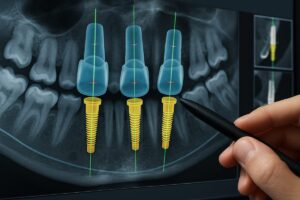Dental implants are artificial tooth roots placed in the jaw to support crowns, bridges, or dentures. Understanding the different kinds of dental implants helps you pick the right option for your bone, budget, and goals. This post explains basic implant parts, the main implant types, what makes each unique, how providers choose, what to expect during treatment, and questions to ask before you commit.
Quick overview: What is a dental implant?
A dental implant has three main parts: the implant body (the screw placed in bone), the abutment (connector), and the final crown, bridge, or denture. Implants restore stability, chewing function, and esthetics. They aim to replace missing teeth with a solution that looks and feels natural.
Different kinds of dental implants — the main types
Endosteal (traditional screw) implants
These are placed directly into the jawbone and are the most common. They work well for single or multiple teeth and have high success rates. Pros: predictable and versatile. Cons: need enough bone and sometimes grafts.
Zygomatic implants
Zygomatic implants anchor into the cheekbone (zygoma) for patients with severe upper jaw bone loss. They avoid long grafting procedures and are used when traditional implants aren’t possible.
Pterygoid implants
Placed into the pterygoid plate at the back of the upper jaw, these implants avoid sinus areas and grafts. They benefit patients needing posterior support without bone grafting.
Transsinus (sinus-engaging) implants
These engage the sinus floor and are chosen instead of a sinus lift in select cases. They differ from zygomatic implants by anchoring in the sinus region rather than the cheekbone.
Subperiosteal implants
A metal frame sits on top of the jawbone but under the gums. Used when bone height is too low for endosteal implants and grafting isn’t an option. Historically less common but still useful in specific cases.
All-on-X / full-arch implant solutions
Full-arch prostheses use a set number of implants (often 4–6) to support a full set of teeth, sometimes loaded immediately for same-day teeth. Patients choose them for efficiency and predictable full-mouth results.
Mini dental implants
These smaller-diameter implants are used for temporary stabilization, narrow ridges, or to secure dentures. They’re less invasive but not always a long-term solution for all cases.
What makes each type unique — key differences to know
Bone requirements vary: some need good bone volume (endosteal), while zygomatic, pterygoid, and subperiosteal options work around bone loss. Surgical complexity ranges from routine to advanced. Immediate loading (same-day teeth) is possible with some full-arch and select implant placements. Longevity and maintenance depend on implant type, oral hygiene, and follow-up care; costs vary widely based on complexity.
How providers choose the right implant for you
Patient factors
Doctors consider bone volume, medical history, smoking status, and esthetic goals.
Treatment goals and timeline
Choice differs for a single tooth, several teeth, or a full-arch need, and whether you want same-day teeth.
Role of imaging and digital planning
CT scans, intraoral and facial scanners, and virtual planning guide implant placement and predict outcomes.
What to expect during treatment and recovery
Expect a consult and CT scan, planned surgery, placement of implants, possible temporary prosthesis, and later a final restoration. Healing times vary (weeks to months). Follow-up visits and routine oral hygiene are essential.
Why choose a board-certified implant specialist
Board certification reflects advanced training and experience. Dr. Michael Fioritto is one of about nine board-certified implant specialists in Ohio and treats patients told they have “no bone” using zygomatic, pterygoid, transsinus, and subperiosteal approaches. The practice uses facial, intraoral, and photogrammetry scanners, teaches local digital All-on-X workflows, cares for out-of-state patients with brief pre-op visits, and offers free consultations and CT scans.
Important questions to ask your implant provider
Which implant type do you recommend and why? Do you perform both surgery and restoration? What imaging will you use? What is the timeline and cost estimate? What is the plan if my bone is insufficient?
Short closing CTA
Want to know which of the different kinds of dental implants fits your needs? Book a free consultation and CT scan to review your options and get a personalized plan.






